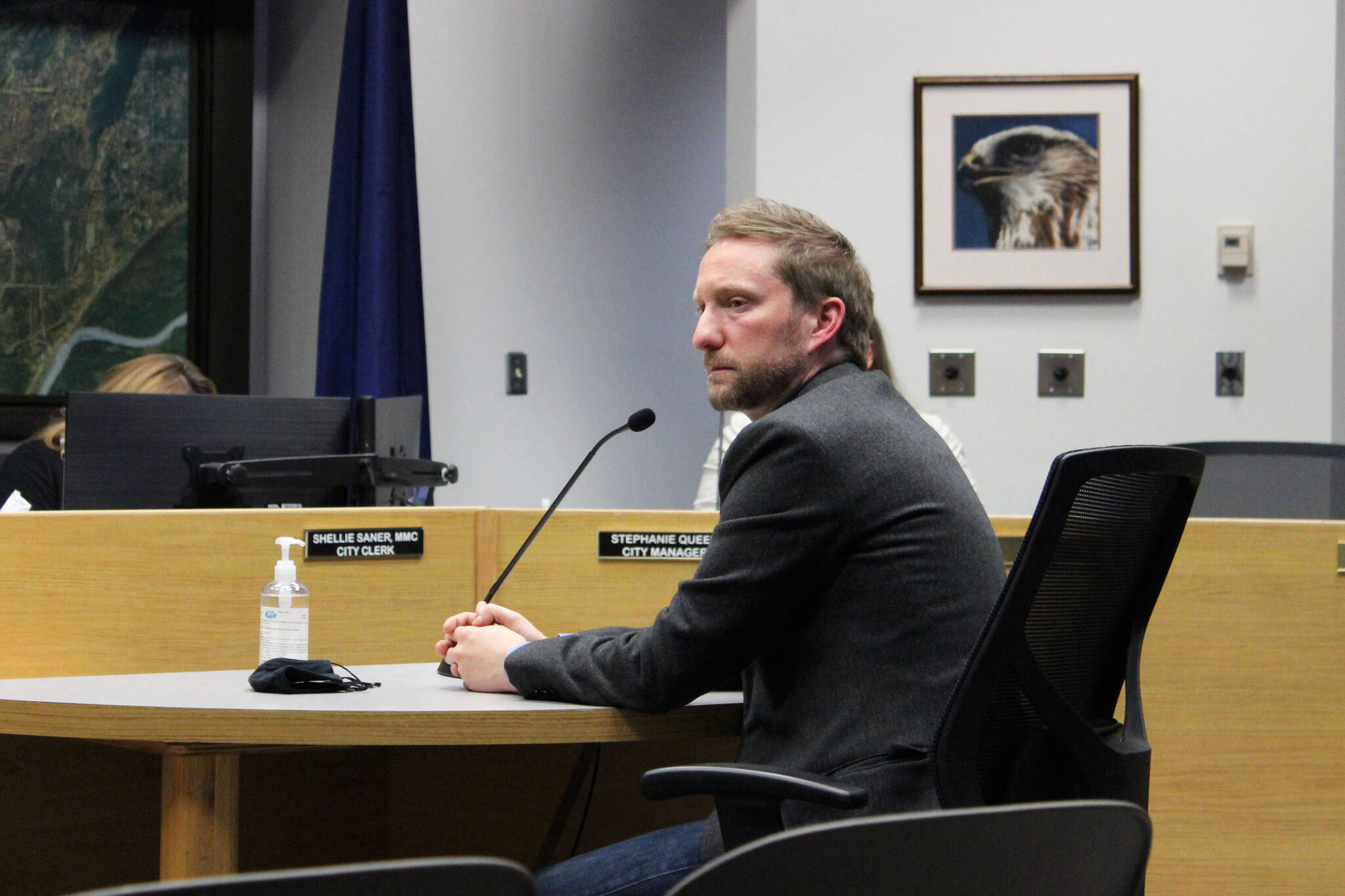Members of the Soldotna City Council were briefed Wednesday on what to expect when the newly approved open primary and ranked choice voting systems go into effect in next year’s elections.
Jason Grenn, the executive director of Alaskans for Better Elections and a former independent member of the Alaska House of Representatives, said during Wednesday’s presentation that Alaska will be the first U.S. state to use both an open primary and a ranked choice general election in the same year.
Alaskans for Better Elections is a nonprofit social welfare organization that aims to provide information about Ballot Measure No. 2.
That ballot measure, which passed narrowly in 2020 with 50.55% of votes cast, created an open primary system and ranked choice general election in Alaska and aimed to increase transparency about the use of “dark money” — or campaign funding from undisclosed sources — in Alaska elections.
Grenn said during Wednesday’s presentation that Alaska will be the first U.S. state to hold both an open primary and a ranked choice general election in the same year.
Open primaries
The passage of Ballot Measure No. 2 means Alaska will have open primary elections in 2022. Under the open primary system, all people vote using the same primary ballot regardless of their political party. Alaska used an open primary system until 2000, Grenn said Wednesday.
“I can remember when we had the open primary and I thought that was the best thing that we ever had,” said Soldotna Mayor Paul Whitney Wednesday. “I hated to see it go.”
When a voter arrives at the polls to vote in an open primary election, they will be given the same ballot as everyone else instead of being given a ballot that corresponds to their political party. On that ballot will be every candidate running for a specific office, with the candidate’s registered party affiliation next to their name. Voters then fill in one bubble for their candidate of choice.
The top four vote-getters from the primary then move on to the general election, regardless of party affiliation. If there are fewer than four candidates running in the primary, all will move to the general election.
“In a general election next November, you could see three Republicans and one Democrat running in one race, two of each party (or) one Republican, one Democrat, one independent, one green party, perhaps in the election,” Grenn said Wednesday. “But as a voter again, regardless of your party affiliation, when the general election comes, we’ll all receive the same ballot and we’ll be using something called ranked choice voting.”
Ranked choice voting
A ranked choice voting system for general elections will begin in 2022. Ranked choice voting allows voters to choose more than one candidate in ranked order. Voters can rank up to four candidates.
The ranked choice ballot shows a grid of bubbles, with one row for each candidate and one column for preference order. Voters fill in the bubble in the “1st Choice” column that corresponds to their first choice candidate. Voters then move to the second column and fill in the bubble that corresponds to their second choice candidate, and so on.
If a candidate receives more than 50% of the first-choice votes, that candidate would be declared the winner of the election.
If no candidate receives more than 50% of the first-choice votes, the candidate who received the least number of first-choice votes is eliminated. Then, the voters who ranked the eliminated candidate as their first choice would have their second choice candidate votes tabulated. The process will continue until one candidate emerges with more than 50% of the votes.
Sample ranked choice ballots are available on the Alaska Division of Elections website.
Among the benefits to Alaska’s new election system, Grenn said, is the nuance allowed throughout the election process. Ranked choice voting and open primaries will encourage voters to be more engaged with all candidates regardless of party and will encourage candidates to pitch themselves to all voters instead of just their base. That’s because candidates will be competing for the second and third choice slots, as well as the first choice slot, he said.
“This puts the onus on voters to engage with all of the candidates (and) learn about the candidates knowing that they need to rank them in a preference as opposed to a binary choice when it comes to just choosing one party or the other,” Grenn said. “Hopefully, that sort of interaction with candidates keeps them engaged on different policies (and) different options for solutions to problems that they’re interested in.”
Multiple Soldotna City Council members voiced their support for the new changes.
“I think we’ve all been frustrated by the increasing polarization in politics at all levels,” said council member Jordan Chilson. “In the last couple of years, I think one of the patterns of becoming more common is, through these elections, we often end up with two really gargantuan candidates on one side or the other end of the spectrum that have a lot of PAC(s) funding them. As a voter, it can be really frustrating.”
“I think this is a super positive change and comes at a very excellent time considering the division that we see in our current political climate,” said council member Justin Ruffridge. “I’m interested to see how it rolls out.”
Wednesday’s full city council meeting can be viewed on the City of Soldotna’s website at soldotna.org.
Reach reporter Ashlyn O’Hara at ashlyn.ohara@peninsulaclarion.com.

